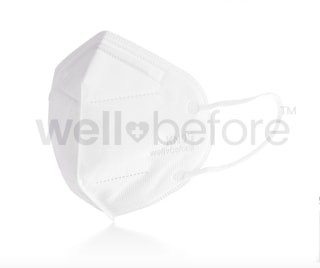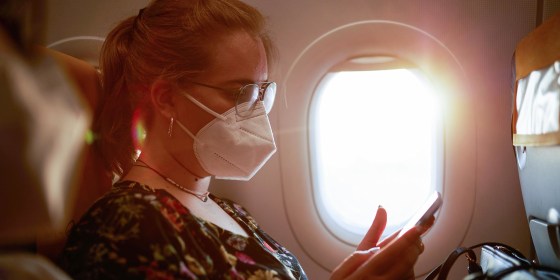
Coronavirus travel essentials: Masks, hand sanitizer and more
The best types of face masks to wear while traveling in public transportation, according to the CDC, and other items to take with you on your trip.




When I travel, I wear one of these disposable masks under a reusable face mask. They’re individually wrapped, made from three layers of non-woven fabric and feature elastic ear loops and an adjustable nose clip. Masks come in a pack of 50 and are available in a variety of colors and patterns. WeCare also sells kids disposable face masks.
The CDC states that manufactured and homemade masks can both be worn on public transit and in public transportation hubs, as long as they fit properly. Reusable, disposable and medical-grade masks, as well as respirators like N95 and KN95 masks, are all permitted. Gaiters can be worn, too, as long as they are made from two layers of fabric or can be folded to make two layers. And while travelers can wear face shields or goggles while traveling, they cannot be used to supplement a mask. Scarves, ski masks, balaclavas and bandannas cannot be worn as mask substitutes. All travelers over 2 years old must adhere to these mask guidelines no matter how long or short they will be in transit for.
According to the CDC, masks you wear on public transportation should:
The U.S. has recently seen an uptick in air travel, despite cautions from the CDC. The TSA screened 1.357 million U.S. airport passengers on March 12, the highest number screened since March 15, 2020 — On March 21, it screened more than 1.5 million people. Experts say an increase in air travel specifically may stem from students across the country going on spring break, and people feeling safe to take public transportation again after being fully vaccinated.
Whatever the case may be, APHI’s study showed that traveling by plane is generally safe so long as travelers and airlines follow safety precautions. Travelers should physically distance, wear face coverings at all times (except while eating and drinking), avoid touching surfaces as much as possible and sanitize their hands. For airlines, consistent use of ventilation systems on planes while boarding, deplaning and in flight is essential. Disinfecting surfaces like tray tables and seats frequently is also important.
According to research by Boeing, as well as the military's U.S. Transportation Command, a plane’s cabin environment significantly reduces and removes cough particles from the air. This is because the air in a plane’s cabin primarily flows from ceiling to floor, not front to back. The air inside the cabin is exchanged every two to three minutes with outside air through HEPA filters, which are similar to those used in hospital operating rooms. Taking this into account, the research shows that the design of a plane’s cabin and its airflow system create the equivalent of more than 7 feet of physical distance between every passenger — even on a full flight.
APHI also conducted research about Covid-19 mitigation efforts at airports. It found the overall strategy to decrease transmission is similar to aircraft efforts: ventilation, disinfection and cleaning procedures, as well as traveler behavior like face mask wearing, hand-hygiene, and physical distancing.
CORRECTION (April 1, 2021, 3:55 p.m. ET): A previous version of this article misstated the certification status of masks made by Halolife. After consulting lab reports and experts, NBC News confirmed that the masks did not meet a new standard for reusable masks. As a result, mention of the masks has been removed from the article.
Catch up on Select's in-depth coverage of personal finance, tech and tools, wellness and more, and follow us on Facebook, Instagram and Twitter to stay up to date.